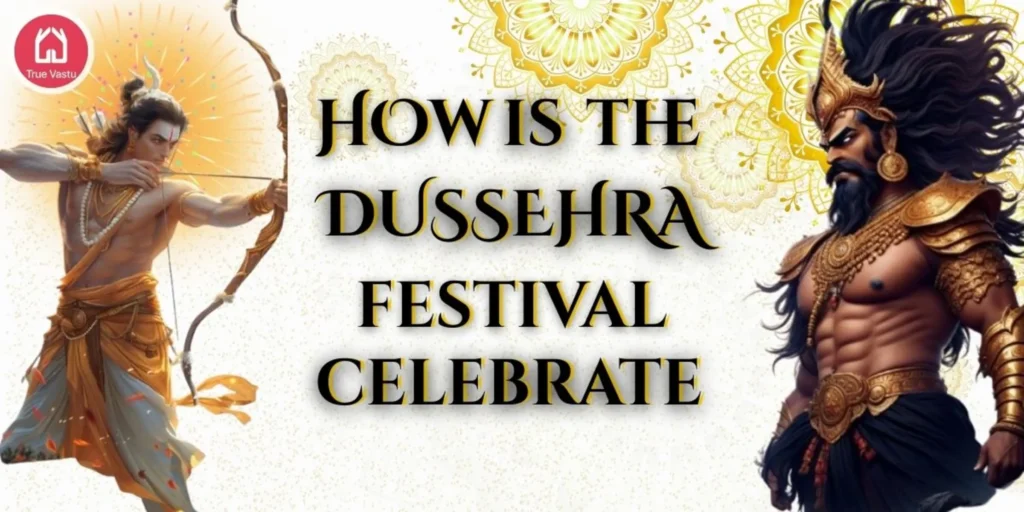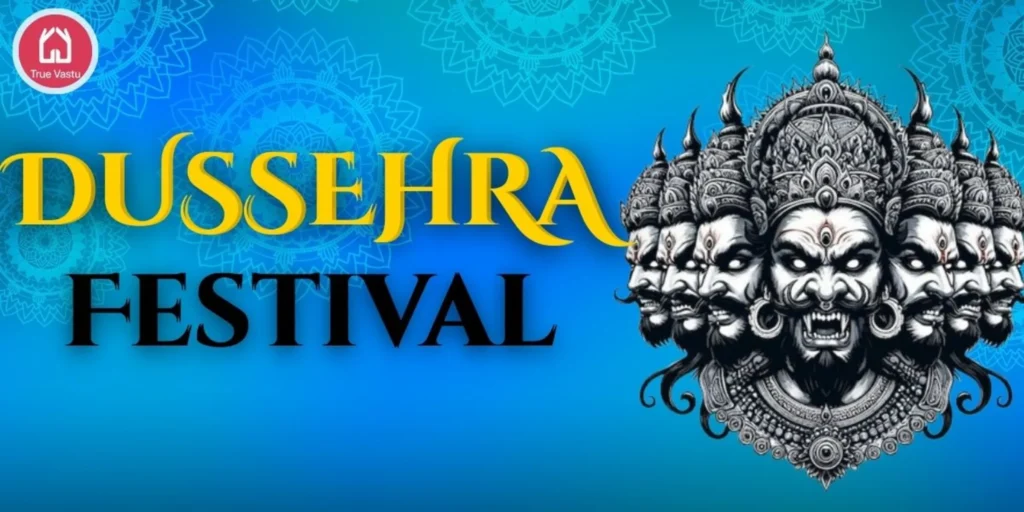Dussehra festival, also known as Vijayadashami, is celebrated on the tenth day of the Ashwin month. It’s a celebration of the victory of good over evil. A reminder that the truth prevails, regardless. This day marks the end of a long war, in which Lord Rama defeats Ravana.
Dussehra Festival Date 2025
In 2025, Dussehra festival date will be on Thursday, October 2nd. Also known as Vijay Dashami. Dashami refers to the 10th day of the lunar cycle. According to the Hindu calendar, Vijay Dashami is celebrated on the 10th day of Shukla Paksha (waxing moon) of Ashvina month.
Dashami tithi begins at 07:01 PM o n October 01, 2025, and ends at 07:10 PM on October 02, 2025.
The Vijay Muhurat will last from 02:09 PM to 02:56 PM on Thursday, October 02, 2025.
Why is Dussehra celebrated?
We all know that Dussehra marks the victory of good over evil, but did you know that there are two different stories of winning related to this day? First is the story of Lord Rama defeating Ravana in a battle, and second is of Goddess Durga’s victory.
Lord Rama is the 7th avatar of Lord Vishnu. After he was sent into exile by his father for 14 years, his wife Sita was abducted by the evil king Ravana. After a long search, lord Rama finally located Sita. This led to a long battle fought between Rama and Ravana. In the end, Rama was victorious, symbolising that truth prevails, nevertheless.
Lord Vishnu’s incarnation as Lord Rama is also symbolic of restoring cosmic balance. It is a repeating theme across timelines. Lord Vishnu incarnates to restore balance whenever those in power start abusing it to suppress the weak. He ensures that justice is served and everyone pays back for their karma. It’s a victory of morals and principles over injustice.
Dussehra, which takes place on the 10th day, also marks the end of the Navratri festival. On this day, called Dashami tithi, Goddess Durga defeated and killed the demon Mahishasura. He was half buffalo and half human. He succeeded in scaring away all the gods from heaven. To save the gods, the three main gods Brahma, Vishnu, and Shiva combined their powers to create Goddess Durga.
She is a fierce goddess holding multiple weapons in her hands. There is a trishul in one hand and a sword in the other. After a ten-thousand years long war, finally, Goddess Durga chopped off Mahishasura’s head. Marking the end of a long war and the victory of the divine forces.
How is the Dussehra festival celebrated?

This festival is celebrated in many different ways across the country. Each state celebrates it uniquely, connecting it to its own cultural history. Key events of the celebration include:
Burning of the Ravan figurine:
It is commonly observed in the Northern parts of India. Where the effigy of Ravana is burned along with the effigies of his brother Kumbhakarna and his son Meghnada. They are usually stuffed with firecrackers. A reminder that ultimately, all the negative forces are meant to meet their end.
Ramlila:
Ramlila performances are organised in different states. These are traditional folk performances reenacting the story of Lord Rama’s life. It adds to the celebrations by bringing people together from all walks of life. The performance offers a spectacular view with vibrant costumes, grand stages, and fireworks. It is an act of devotion towards the morals and principles held up by Lord Rama and the greatness of the life he lived.
Immersion of Goddess Durga’s Idol:
In the West Bengal region, this day is celebrated as the last day of Navaratri celebrations. An idol of Goddess Durga, made of clay and other natural materials, is established in magnificent pandals for nine days. Where people come together to be a part of the grand celebrations. On the tenth day, the idol is immersed in the water, marking the end of the celebrations.
Worship of Goddess Chamundeshwari:
In the Mysore region of Karnataka, Goddess Chamundeshwari is offered prayers, and a grand yatra is organised. The parade is known as “Jamboo Savari”, where a golden seat of Goddess Chamundeshwari is placed on the top of a beautifully decorated elephant. The yatra proceeds through the city, with devotees coming to seek blessings from her.
Ayudha Puja:
It is a common part of the celebrations in South India. Ayudh Puja refers to the ‘worship of tools’. Where people worship their work equipment, vehicles, and books, it is a tradition to honour and respect the tools that sustain their profession. It is believed that when you respect your work, you become deeply involved with it. And you no longer require external motivations to perform well.
Learn also:- vastu for pooja room
Kullu Dussehera:
Celebrated in the Kullu region of Himachal Pradesh. The celebrations last for seven days. Where the local deity Lord Raghunath is worshipped with vibrant rituals. Followed by folk dances, music, and performances. Many tourists visit to attend this procession in person. Unlike in other parts of India, the Kullu Dussehra does not include burning an effigy of Ravana.
Learn also:- God Face Direction in Home
Spiritual Significance of Dussehera Festival
Vijaydashami literally translates to the 10th day of victory. On this day, you not only win battles with other people, but you also conquer the negative parts of yourself. It’s about winning the battle against your own weaknesses, letting go of bad habits, and controlling short-term desires and distractions. In a modern context, Vijaydashami is a reminder that true victory comes from gaining complete mastery over oneself. It’s about stepping outside the comfort zone, facing your fears, and dealing with them. Rather than avoiding them or trying to find an escape from them.
FAQs
Q1. Why is a dummy figure of Ravana burnt on the Dussehra festival?
The burning figurine is symbolic of burning away our internal conflicts, desires, ego, and worries.
Q2. Why did Ravana have ten heads?
Each head of Ravana stands for one of the negative qualities within us. Like lust, anger, attachment, greed, pride, and ego. These evils can blind us and distract us from our true purpose.
Q3. Do other countries also celebrate the Dusshera festival?
Yes, besides India, other neighbouring countries like Bangladesh, Nepal, and Malaysia also celebrate it with enthusiasm.
Q4. Why are two other figures burnt alongside Ravana on Dussehera?
Figurines of Kumbhakarana (Ravana’s brother) and Meghnada (Ravana’s son) are also burnt. It is a representation of burning away all evils, along with the forces that are supporting it.
Q5. What is the Dussehra date?
This year, Dussehra will be celebrated on Thursday, October 2, 2025.
